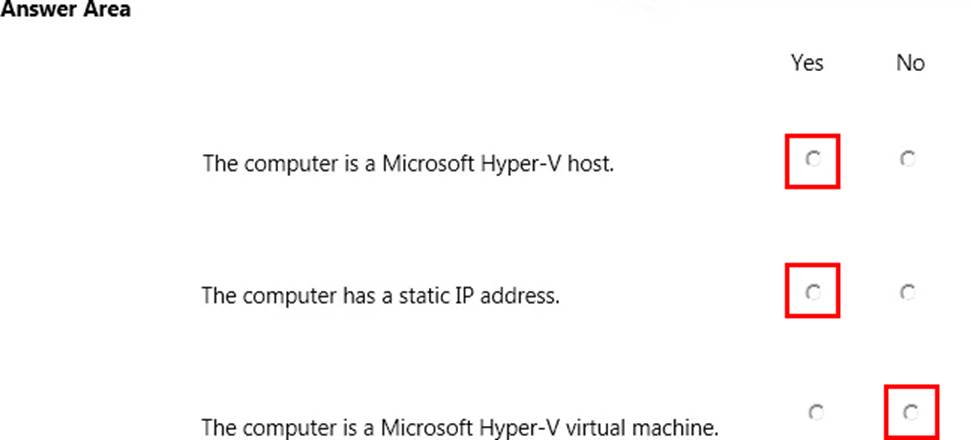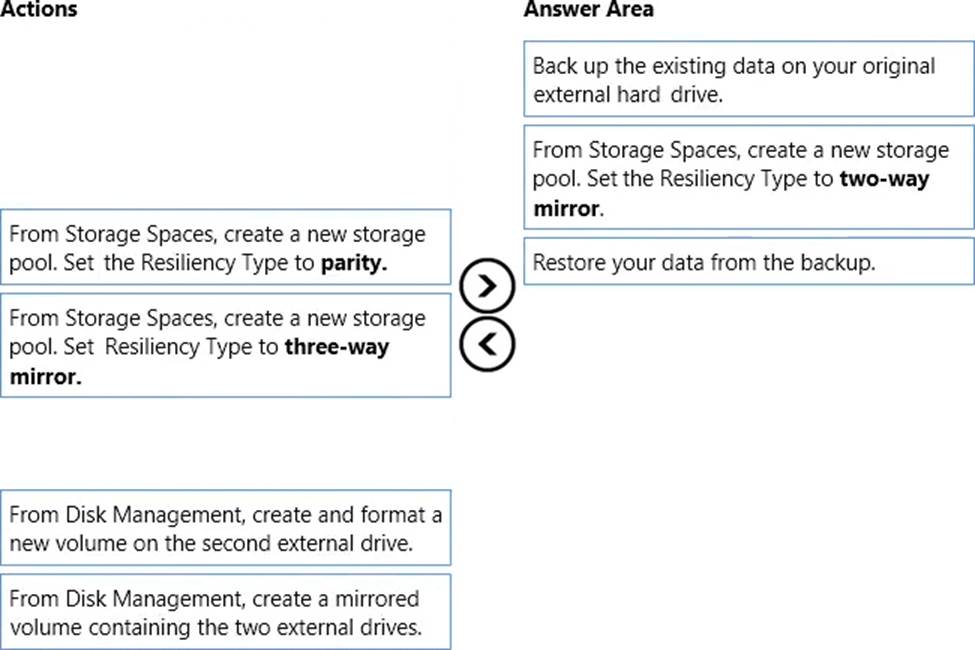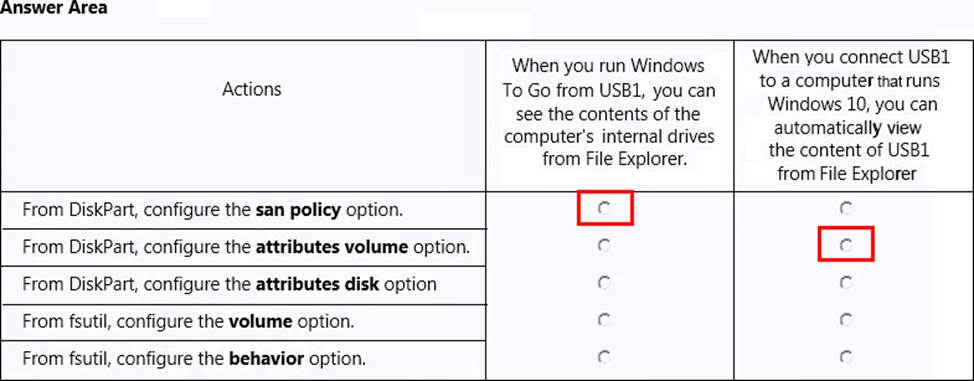Microsoft 70-697 Configuring Windows Devices Online Training
Microsoft 70-697 Online Training
The questions for 70-697 were last updated at Jan 02,2026.
- Exam Code: 70-697
- Exam Name: Configuring Windows Devices
- Certification Provider: Microsoft
- Latest update: Jan 02,2026
A company has 100 client computers that run Windows 10 Enterprise.
A new company policy requires that all client computers have static IPv6 addresses.
You need to assign static IPv6 addresses to the client computers.
Which Network Shell (netsh) command should you run?
- A . add address
- B . set interface
- C . set global
- D . set address
HOTSPOT
You are setting up a Windows 10 Enterprise computer.
The computer’s network connections are shown in the Network connections exhibit. (Click the Exhibit button.)
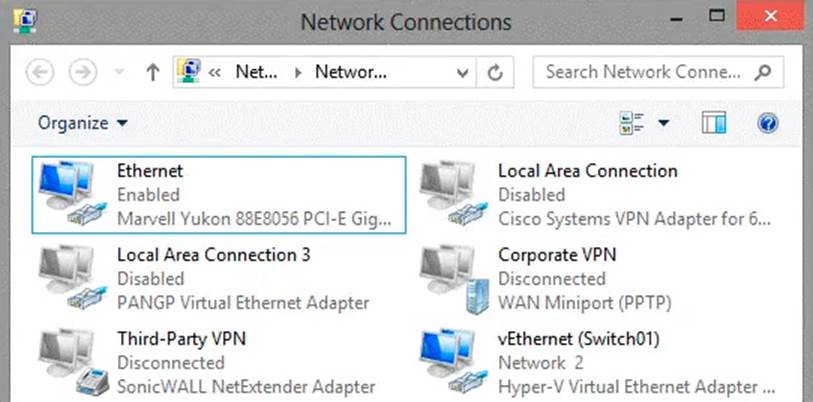
The computer’s network settings are shown in the Network Settings exhibit. (Click the Exhibit button.)

Advanced TCP/IP settings are shown in the Advanced TCP/IP Settings exhibit. (Click the Exhibit button.)
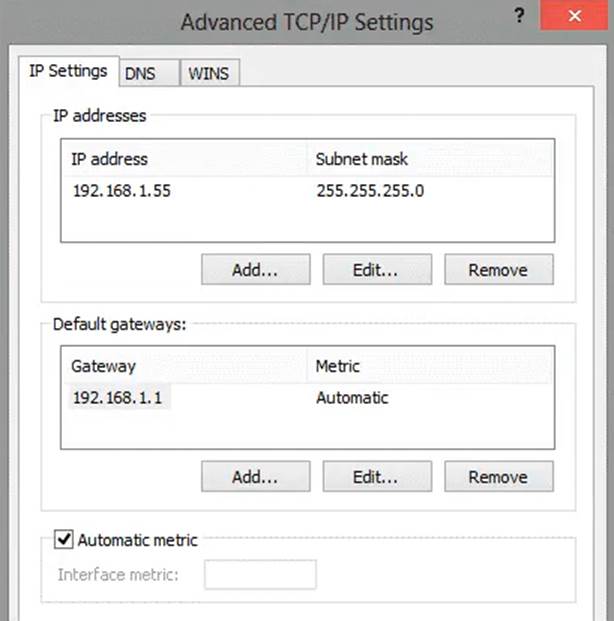
For each of the following statements, select Yes if the statement is true. Otherwise, select No.
NOTE: Each correct selection is worth one point.
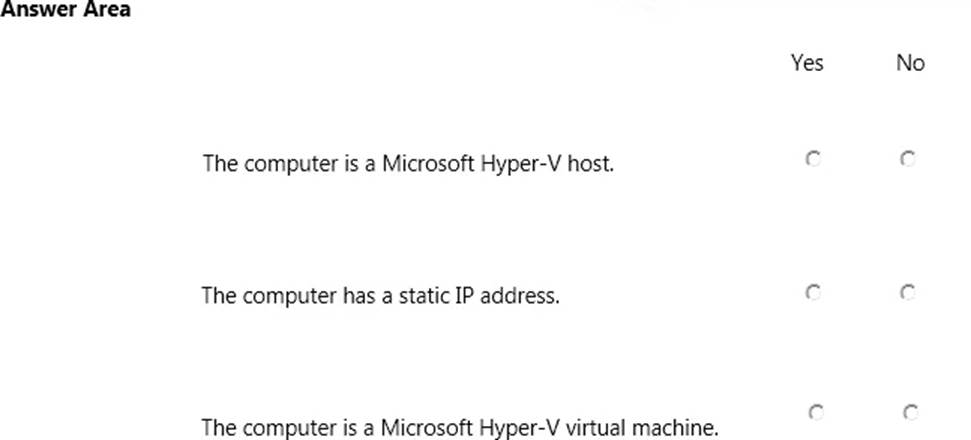
A company has 10 portable client computers that run Windows 10 Enterprise.
The portable client computers have the network connections described in the following table.

None of the computers can discover other computers or devices, regardless of which connection they use.
You need to configure the connections so that the computers can discover other computers or devices only while connected to the CorpWired or CorpWifi connections.
What should you do on the client computers?
- A . For the CorpWifi connection, select Yes, turn on sharing and connect to devices.
- B . Turn on network discovery for the Public profile.
- C . Change the CorpWired connection to public. Turn on network discovery for the Public profile. For the HotSpot connection, select No, don’t turn on sharing or connect to devices.
- D . For the CorpWired connection, select Yes, turn on sharing and connect to devices.
- E . Turn on network discovery for the Private profile.
Topic 5, Configure storage
You have a computer named Computer1 that runs Windows 10 Enterprise. You add a 1 TB hard drive and create a new volume that has the drive letter D.
You need to limit the amount of space that each user can consume on D: to 200 GB. Members of the Administrators group should have no limit.
Which three actions should you perform? Each correct answer presents part of the solution.
- A . Run fsutil quota violations D:.
- B . Enable the Deny disk space to users exceeding quota limit setting.
- C . Enable the Enable Quota Management setting.
- D . Set a default quota limit.
- E . Run convert D: /FS:NTFS.
- F . Add a quota entry.
You purchase a new Windows 10 Enterprise desktop computer. You have four external USB hard drives.
You want to create a single volume by using the four USB drives. You want the volume to be expandable, portable and resilient in the event of failure of an individual USB hard drive.
You need to create the required volume.
What should you do?
- A . From Control Panel, create a new Storage Space across 4 USB hard drives. Set resiliency type to Three-way mirror.
- B . From Control Panel, create a new Storage Space across 4 USB hard drives. Set resiliency type to Parity.
- C . From Disk Management, create a new spanned volume.
- D . From Disk Management, create a new striped volume.
DRAG DROP
You have a Windows 10 Enterprise computer. You have a 1-terabyte external hard drive.
You purchase a second 1-terabyte external hard drive.
You need to create a fault-tolerant volume that includes both external hard drives. You also need to ensure that additional external hard drives can be added to the volume.
Which three actions should you perform in sequence? To answer, move the appropriate actions from the list of actions to the answer area and arrange them in the correct order.
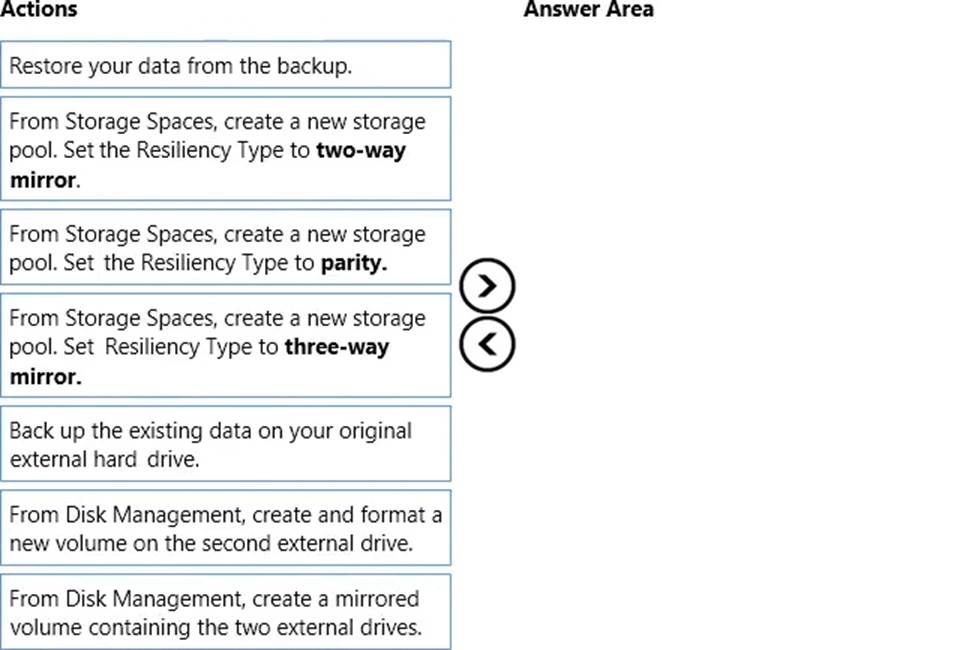
HOTSPOT
You manage 50 computers that run Windows 10 Enterprise.
You have a Windows to Go workspace installed on a USB drive named USB1.
You need to configure USB1 to meet the following requirements:
In the table below, select the action that must be performed to achieve each requirement.
NOTE: Make only one selection in each column. Each correct selection is worth one point.
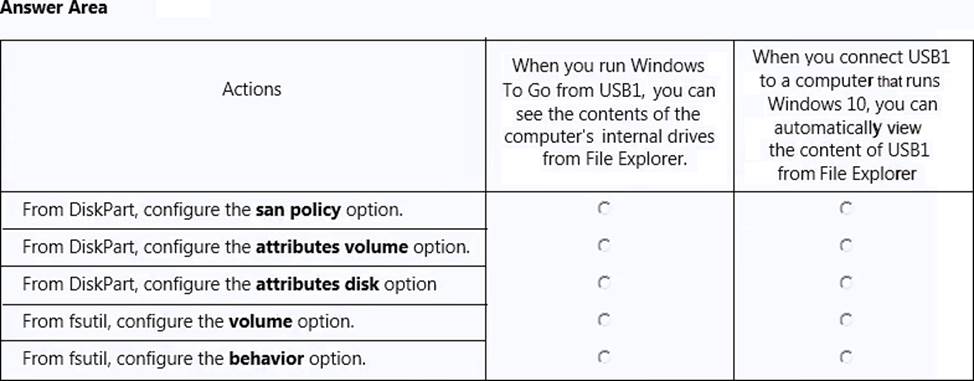
You support Windows 10 Enterprise computers that are members of an Active Directory domain. Recently, several domain user accounts have been configured with super-mandatory user profiles.
A user reports that she has lost all of her personal data after a computer restart.
You need to configure the user’s computer to prevent possible user data loss in the future.
What should you do?
- A . Remove the .man extension from the user profile name.
- B . Configure FolderRedirection by using the domain group policy.
- C . Configure the user’s documents library to include folders from network shares.
- D . Add the .dat extension to the user profile name.
You have a client Windows 10 Enterprise computer. The computer is joined to an Active Directory domain. The computer does not have a Trusted Platform Module (TPM) chip installed.
You need to configure BitLocker Drive Encryption (BitLocker) on the operating system drive.
Which Group Policy object (GPO) setting should you configure?
- A . Allow access to BitLocker-protected fixed data drives from earlier version of Windows.
- B . Require additional authentication at startup.
- C . Allow network unlock at startup.
- D . Configure use of hardware-based encryption for operating system drives.
You administer Windows 10 Enterprise desktop computers that are members of an Active Directory domain.
You want to create an archived copy of user profiles that are stored on the desktops. You create a standard domain user account to run a backup task.
You need to grant the backup task user account access to the user profiles.
What should you do?
- A . Add the backup task account to the Remote Management Users group on a domain controller.
- B . Add the backup task account to the Backup Operators group on every computer.
- C . Add the backup task account to the Backup Operators group on a domain controller.
- D . Set the backup task account as NTFS owner on all the profiles.
Latest 70-697 Dumps Valid Version with 339 Q&As
Latest And Valid Q&A | Instant Download | Once Fail, Full Refund

